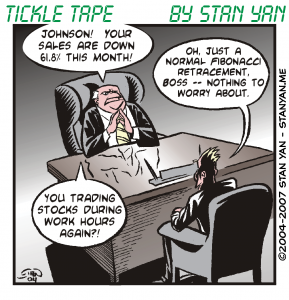Trading is risky. There are times when you have almost no evidence to put on trade but your gut instinct. For some traders, gut instinct is enough validation to put on a trade. Others, however, need much more evidence and reassurance. It’s useful to know how much reassurance you need before you feel comfortable taking a risk. You’ll trade more calmly if you match your risk tolerance to your trading style.
Consider trading a typical head-and-shoulders pattern. Where you feel comfortable entering reveals a lot about how much risk you are willing to take, and how much reassurance and validation you need. The typical head-and-shoulders pattern (which occurs in an advancing trend in this example) consists of a final rally of a stock (the head) separated by two smaller rallies (the right and left shoulders) that occur before and after the final rally. The line joining the lows of the two rallies is called the neckline.
Many traders feel comfortable entering a short trade at the break of the neckline since it’s at this point where the trend should start declining. But there’s still some risk involved in executing this trade. Patterns do not recur with unfailing regularity. In other words, just because A (left shoulder) and B (head) happen doesn’t mean that C (right shoulder) will definitely happen. It’s possible that you entered prematurely, but that’s the risk you take.
You may enter after B on the assumption that C will indeed occur, but some traders may not be willing to forecast a bearish trend based on an incomplete head-and-shoulders pattern. The right shoulder, or C, may not happen. More validation is needed before a more risk-averse trader is willing to put money on the line. Some traders wait for C to actually occur, and possibly signal a declining trend. The especially prudent trader may seek out even more validation.
Many traders argue that volume is critical for the verification of the head-and-shoulders pattern. Activity is usually heaviest during the formation of the left shoulder and also tends to be heavy as prices form the head. But the strongest confirmation comes if the formation of the left shoulder is accompanied by lower volume. So if you really need assurance, it’s necessary to not only wait for the head-and-shoulders pattern to fully form, but to confirm it with changes in volume.
Traders differ in terms of risk tolerance. Some traders enjoy taking risks and are willing to put on a trade with almost no validation. Other traders, however, seek out as many sources of validation as possible. There are many ways to trade profitably. What all winning traders have in common, however, is that they match their trading style to their levels of risk tolerance. The closer the match, the more calmly you’ll trade and the higher your chance of maintaining profitability.


